Have you thought about seeing or visualizing OSPF, EIGRP, BGP, VRF and more on your network with a simple, color-coded view on your computer screen? Recently I shared with you a network visualization tool called nuVML that can be used to visualize or see what is happening on your network, physical or virtual. Traffic and routing protocols are presented in different colors, on a 3-dimensional view, and is updated in real-time. Zoom into individual routers to see Layer 2 and Layer 3 information, physical and logical interfaces connected. How can a network engineer benefit from it in real world?
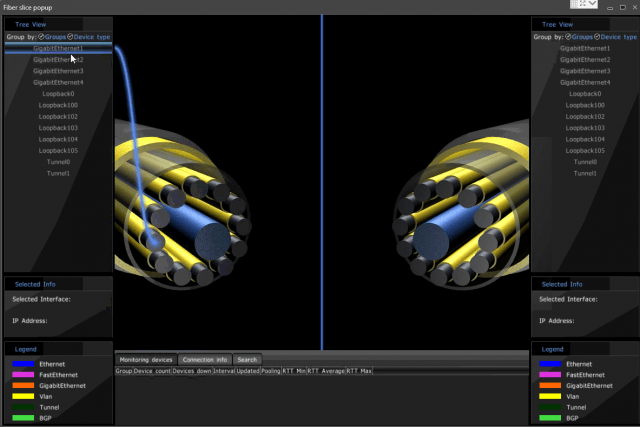
Two main use cases of nuVML™
With a simulation backend engine such as Cisco VIRL, nuVML can be used for green-field network design, change validation and testing in a lab environment. Students who are working on their CCNA, CCNP and CCIE can use it to study network topologies, traffic flow and routing table changes. With 2D and 3D views of packet flow inside your network in real-time, it makes the learning easy and fun.
The second use case is for production network discovery. In this case, nuVML works independently without the need of a backend simulation engine. When dealing with a large scaled, multi-layered production network, engineers find it is specially challenging to have a overall understanding of what’s going on on the network. A Visio network diagram can never keep up-to-date with what’s running in production today. With nuVML’s network discovery feature, it gives a holistic view of the live network. Routers and network topology are discovered via routing table lookup, CDP, ARP and more. Traffic flow is shown in real-time. More importantly, after the discovery, can you create a copy of the production network and replicate it in a virtual environment for troubleshooting and change validations.
Here are some video tutorials on how to visualize OSPF, EIGRP, ISIS, BGP, VPNv4, iBGP/eBGP, VRF, MPLS LDP, and live traffic.
nuVML is not a network simulation tool like Cisco VIRL, CML and GNS3. When working together with one of the network simulation tools, nuVML can be used for network design, capacity planning, proof of concept, change validation, “what if” scenario testing and more. nuVML also runs as a stand-alone application to discover and visualize an existing network physical or virtual. To learn more, go to nuVML Virtual Modeling Lab page. A Quick Start Guide is also available.

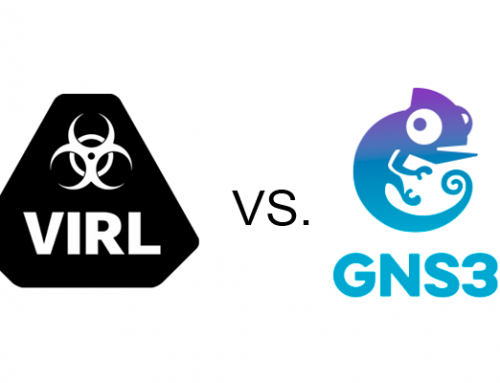
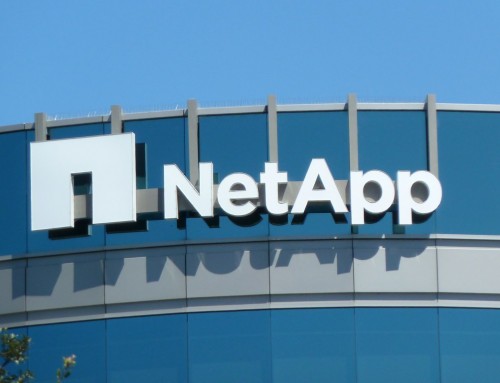
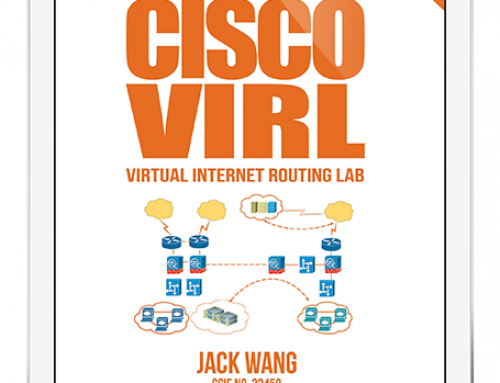
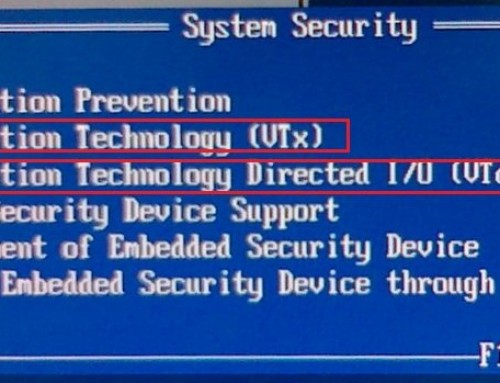
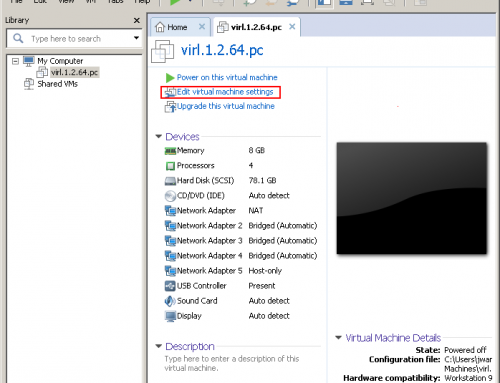
Jack, First 2 video clips are really helpful for network visualization. I appreciate this type of reading. Great article thanks and keep posting tings like this.
can i know router series and their description
In reference to Cisco VIRL’s website,
List of supported features for IOSv:
802.1Q, AAA, ACL, BGP, DHCP, DNS, EEM, EIGRP, EoMPLS, Flex Netflow + TNF, GRE, ICMP, IGMP, IP SLA, IPSec, IPv6, ISIS, L2TPv3, MPLS, MPLS L2VPN, MPLS L3VPN, MPLS TE, Multicast, NAT, NTP, OSPF, PfR, PIM, PPPoE, RADIUS, RIP, SNMP, SSH, SYSLOG, TACACS, TFTP, VRF-LITE
Features likely to work for IOSv:
HSRP, VRRP, GLBP, EZVPN, QoS, LISP, ZBFW, Performance Monitor
• Read more for IOSv: https://learningnetwork.cisco.com/docs/DOC-30469
List of supported features for IOSvL2:
Layer-2 forwarding (auto-config’d), Switchport (auto-config’d), 802.1q trunk, 802.1q VLANs (auto-config’d), Spanning Tree (auto-config’d), Port-Channel (Pagp and Lacp), 802.1x passthrough, Port-ACLs, Dynamic Arp Inspection, DHCP Snooping, IP device tracking, Switched Virtual Interfaces, Layer-3 forwarding over SVIs, Routing protocol support, VTP v1-3, PVST, QoS, Inter-VLAN routing, VLAN Access Maps (VACLs / access control lists for VLANs), ACL functionality for both layer2 and layer3 protocol packets, Dynamic Trunking Protocol support, Switchport protected mode
• Read more for IOSvL2: https://learningnetwork.cisco.com/docs/DOC-30404
List of supported features for IOS-XRv:
IPv4, IPv6, BGP, MP-BGP, EIGRP, ICMP, OSPF, NTP, TFTP, MPLS, MPLS L3VPN, MPLS TE, ISIS, mVPN GRE / mLDP / P2MP TE, AAA, RADIUS, TACACS, SNMP, FLEX CLI, Multicast (PIM, MSDP, IPv6), Syslog, VLANs / QinQ (.1Q, .1AD), RPL, ACLs, SSH, VRF-LITE
• Read more for IOS-XRv:https://learningnetwork.cisco.com/docs/DOC-30449
List of supported features for NX-OSv:
802.1x, AAA, AMT, BGP, CDP/LLDP, EIGRP, FHRP-HSRP, GLBP, VRRP, ICMP, IGMP, IPv4, IPv4/6, IPv6, ISIS, L3 Routing Protocols, LDAP, LISP, MLD, MSDP, NTP, OSPF, PIM/PIM6, Radius, RIP, SNMP, Syslog, TACACS+, VRF, XML/Netconf, NX-API
• Read more for NX-OSv:https://learningnetwork.cisco.com/docs/DOC-30470
UPDATE 4/10/2016: NX-OSv (Titanium) – end of development
The NX-OSv virtual machine image that has been provided with VIRL is based on the Titanium development platform, using the NXOS operating system with a hardware model based on the NEXUS 7000-series platform.
The virtual machine provides Layer-3 and management-plane features taken from the 7.x.x version of the NXOS operating system. As many of you will be aware, Layer-2 switching functionality is not present in the image.
Development efforts in the NXOS operating system, are now strongly focused on moving to the next generation NXOS as implemented today on the NEXUS 9000-series platform. To that end, Layer-2 and Layer-3 feature development is aligned toward the next generation NXOS virtual machine platform. As a result, there are no plans to deliver Layer-2 switching features on the NX-OSv (Titanium) virtual machine platform.
The first virtual machine platform using the next generation NXOS operating system will be NXOSv9000, which is expected to be available on VIRL in late 2016.
List of supported features for CSR1000v:
802.1Q, AAA, ACL, BGP, DHCP, DNS, EEM, EIGRP, EoMPLS, Flex Netflow + TNF, GRE, ICMP, IGMP, IP SLA, IPSec, IPv6, ISIS, L2TPv3, MPLS, MPLS L2VPN, MPLS L3VPN, MPLS TE, Multicast, NAT, NTP, OSPF, PfR, PIM, PPPoE, RADIUS, RIP, SNMP, SSH, SYSLOG, TACACS, TFTP, VRF-LITE
Features likely to work for CSR1000v:
HSRP, VRRP, GLBP, EZVPN, QoS, LISP, ZBFW, Performance Monitor
• Read more for CSR1000v: http://www.cisco.com/c/en/us/products/routers/cloud-services-router-1000v-series/datasheet-listing.html
List of supported features for ASAv:
• Read more for ASAv: http://www.cisco.com/c/en/us/td/docs/security/asa/asa94/asav/quick-start/asav-quick/intro-asav.html
It would be helpful to have more information on troubleshooting. For example, I cannot telnet to the routers. I followed your instructions, but, I keep getting a “connection refused” error on the console. I know I am not the only one who has issues with the usability of Virl. Many of my other students in CCNP classes cannot make this software work. Ironically, we troubleshoot BGP for a major ISP all day long without problems
Greg, thank you for your feedback. Are you using VM Maestro to connect the VIRL? Is VIRL installed on a different server or it is on your computer? Are you running VMware player or workstation if so?
Hello, Did the nuVML able to simulate VSS system ?
Cause the packet tracer it can’t.
Please advice
labcorp drug screening [url=http://tramadol.cdhost.com]tramadol.cdhost.com[/url] herbal dandruff remedies